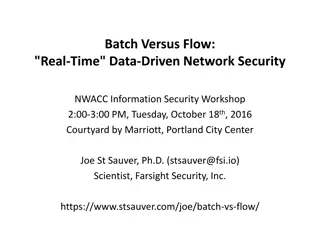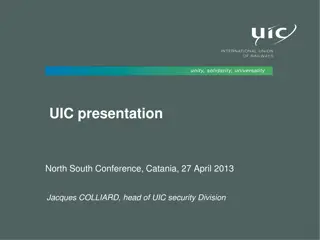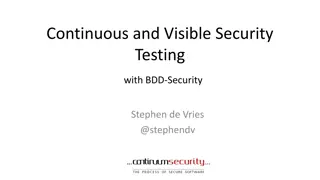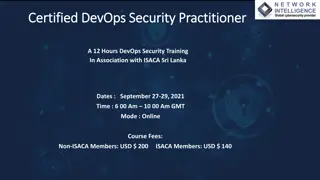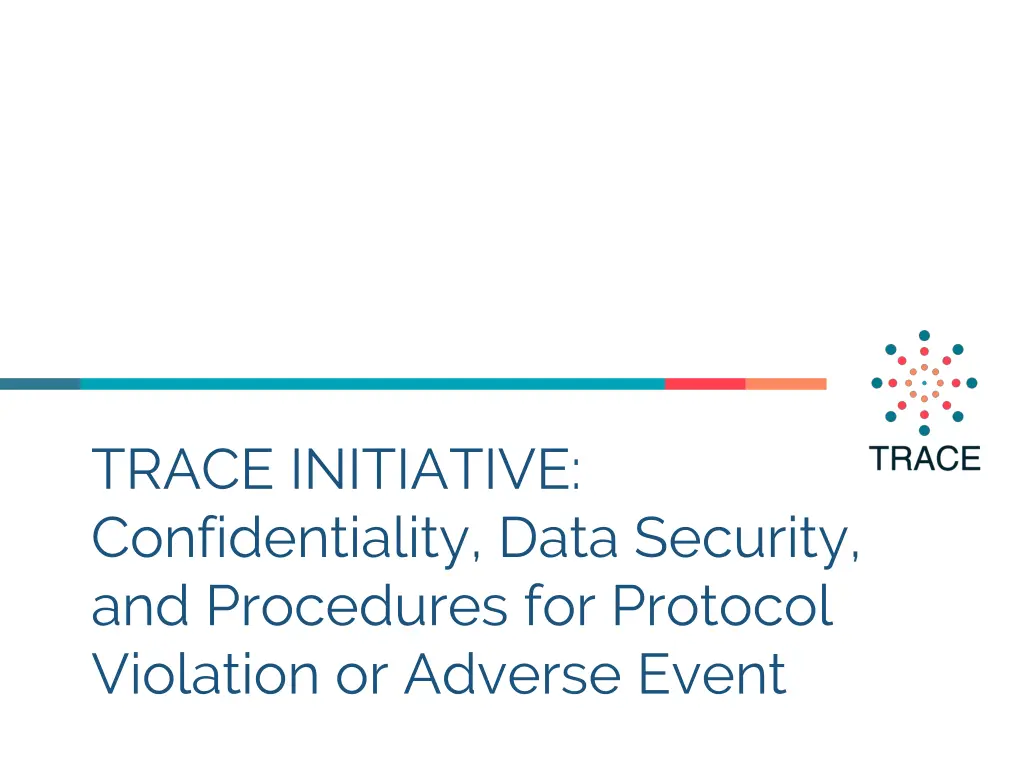
Ensuring Confidentiality and Data Security in Healthcare Settings
Learn about the importance of confidentiality in healthcare, the steps taken to maintain patient privacy, and the significance of data security in the context of protocol violation or adverse events.
Download Presentation

Please find below an Image/Link to download the presentation.
The content on the website is provided AS IS for your information and personal use only. It may not be sold, licensed, or shared on other websites without obtaining consent from the author. If you encounter any issues during the download, it is possible that the publisher has removed the file from their server.
You are allowed to download the files provided on this website for personal or commercial use, subject to the condition that they are used lawfully. All files are the property of their respective owners.
The content on the website is provided AS IS for your information and personal use only. It may not be sold, licensed, or shared on other websites without obtaining consent from the author.
E N D
Presentation Transcript
TRACE INITIATIVE: Confidentiality, Data Security, and Procedures for Protocol Violation or Adverse Event
Hello! I am xxx I am here because I love to give presentations. You can find me at: @username 2
Confidentiality in Care Confidentiality refers to the agreements you make with patients about how you will collect, store, and use the information they share with you.
Confidentiality is a Guiding Principle of HTS Confidentiality: Enables the client to feel safe Protects the client after the session Promotes trust Breach of confidentiality: Failure to respect a person s privacy by telling another person private information
Confidentiality in Recency Testing Clients have a right to have the information they share kept confidential. Steps must be taken to ensure that only HTS and other service providers have access to information and to separate Client identifiers must be kept separate from the information that they share during data collection (e.g., HIV Recent Infection Surveillance Register).
Confidentiality in Recency Testing To ensure the confidentiality of clients: We will not collect any Personally Identifiable Information (PII) other than what is essential to meet the objectives of the assessment.
Personal Identifying Information (PII) Any information that can be used to distinguish or trace an individual s identity: Name National ID Patient ID Date of Birth Telephone Number Photograph Fingerprint Home Address
How do we maintain patient confidentiality? Study: Patient names and date of birth are not recorded on recency forms Human: Study staff will not share private information (e.g., names) about study clients. Physical: Study registers, which can be linked to patient medical records with PII (using HTS #), will be stored in a locked cabinet in a locked room only accessible by clinic study staff. Electronic: Data will be encrypted. Electronic data will be stored on password protected tablets and computers.
Statement of Intent to Maintain Confidentiality I, , will at all times maintain the confidentiality of the patients whose patient data are reviewed as part of this project. At no time will I disclose the names of patients whose patient data are reviewed, or any information within their patient charts. All patient data will be reviewed in a private location. If there are questions related to the patient data, these will be discussed with the study team in a private location. Once the project is complete, individual-level patient data, including names and information, will not be discussed with anyone outside of the study team. Signed by: . Study Role: Place: Date:
Paper & Electronic Data Security Data security is important at every stage: data collection, transfer, and storage.
Paper & Electronic Data Security All staff must sign that they will abide by data security and confidentiality principles and procedures. All electronic devices and databases will be encrypted, password protected and accessible only by appropriate staff.
PROCEDURES FOR PROTOCOL VIOLATION OR ADVERSE EVENTS
Recency Program Protocols All adverse incidents, unexpected protocol violations, security incidents harming clients or study staff, breaches of confidentiality, or adverse physical or mental reactions to study procedures will be reported to all relevant ethical review committees. Clinic staff will report the incident by phone immediately to study site coordinator. 15
Reporting Protocol Violations Protocol violations are any events where protocol was not followed. Supervisors must explain the violation, consequences of the violation, and corrective action taken to ensure that such violations do not reoccur.
Example Protocol Violations Enroll someone who is <13 years old Forget to review informed consent script Misplace a register Record patient identifying information Inform client of recent infection test result Conduct recent infection test for client who reports previous HIV diagnosis 17
Adverse Event Reporting Defined as events leading to serious psychological or physical harm to a client for being involved in a study. Violations of confidentiality Infection or fainting from blood draw
Adverse Event Reporting In case of an adverse event, notify the supervisor immediately to fill out an Adverse Event Report.










